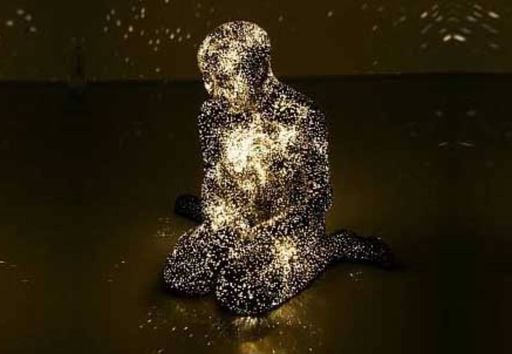Faint Bioluminescence Observed in Living Organisms
CALGARY, Canada – A recent study has found that humans and other living organisms emit an extremely faint light that disappears upon death. The findings, published in The Journal of Physical Chemistry Letters, provide a surprising glimpse into the subtle biophysical processes occurring in living cells.
Researchers from the University of Calgary and Canada’s National Research Council observed this phenomenon in both animals and plants. They noted that living cells continuously emit a dim glow, scientifically referred to as ultra-weak photon emission (UPE) or biophoton emission.
How the Light is Produced
According to the researchers, the light originates from byproducts generated during cellular metabolism. Among these byproducts are reactive oxygen species (ROS), which form naturally in cells but can also indicate oxidative stress.
“This light is not visible to the naked eye,” explained Dr. Hiroshi Matsumoto, a lead scientist on the study. “We used highly sensitive equipment, like electron-multiplying charge-coupled device (EMCCD) cameras, to detect it.”
During experiments, mice were placed inside a dark box, and their biophoton emissions were recorded. After euthanasia, images taken under the same conditions showed a clear decrease in light emission, confirming that the faint glow is closely associated with life processes.
Biophoton Emission in Plants
The research also extended to plants. Healthy leaves emitted more biophotons compared to damaged or decaying leaves. This suggests that biophoton intensity could serve as a potential indicator of a plant’s health and vitality.
“Monitoring biophoton emission in plants may provide a non-invasive method to assess physiological conditions,” said one of the study authors. “It highlights the universal nature of this phenomenon across living organisms.”
Implications for Biology and Medicine
While the concept of living beings emitting light may sound extraordinary, the study opens new avenues for understanding cellular metabolism, oxidative stress, and even aging. The research suggests that biophoton measurement could one day help scientists monitor cellular health, detect early signs of disease, or track plant stress in agriculture.
Previous studies had hinted at biophoton emission, but this research provides more systematic evidence across different species, including mammals and plants. The ability to detect life processes through ultra-weak light emission offers a novel, non-invasive way to study living organisms.
Future Directions
Researchers are optimistic that further studies could explore the relationship between biophoton intensity and human health. For instance, changes in biophoton emission may reflect metabolic shifts, stress levels, or responses to environmental changes.
“While it is still early days, these findings could eventually lead to new diagnostic tools,” noted Dr. Matsumoto. “Imagine a future where a faint glow could help doctors monitor cellular health in real time.”
Conclusion
The discovery that living beings emit faint light emphasizes the remarkable complexity of life. From humans and animals to plants, biophoton emission serves as a subtle signal of vitality. As research progresses, this phenomenon may not only deepen our understanding of biology but also provide innovative ways to monitor health in both humans and ecosystems.














